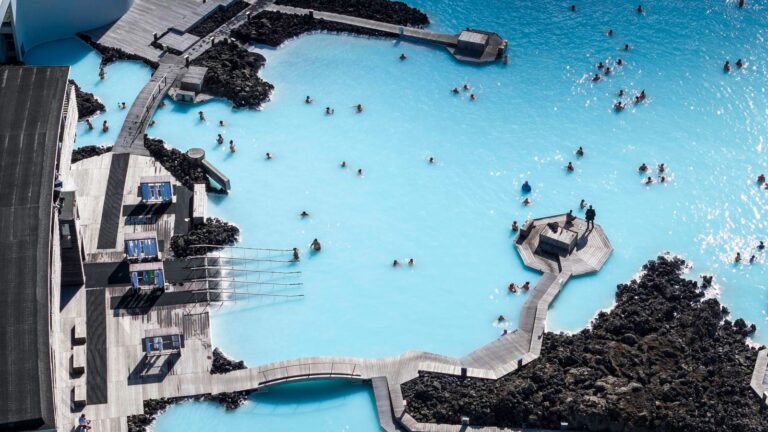In May, the threat of a volcanic eruption didn’t keep tourists away from the Blue Lagoon near the fishing village of Grindavík. (Photo: John Moore)
Getty Images
Nothing has hurt Iceland’s tourism in recent years, not even the coronavirus (which temporarily stalled tourism, but visitor numbers have since returned to pre-pandemic levels) or the threat of a volcanic eruption (tourist numbers in Iceland have reached pre-pandemic levels, despite the Icelandic Met Office warning of an imminent risk of eruption last November).
According to the Bank of Iceland, Iceland welcomed approximately 2.2 million tourists last year, roughly six times the country’s population, and tourism export revenues amounted to 598 billion ISK (about US$4.2 billion), accounting for almost a third of the country’s total annual export earnings. According to Statistics Iceland, tourism will account for 8.5% of Iceland’s GDP in 2023, exceeding the pre-pandemic year.
Still, while the economic upturn is welcome, too many tourists can be all good. Like many European destinations, including Seville, Amsterdam, and Dubrovnik, Iceland has imposed a tourist tax to combat overtourism. Hotel guests pay a small fee of 600 kroner ($4.31) to help raise funds for sustainability programs.
But now it seems the Land of Fire and Ice is considering tweaks. “We’re still trying to shape our tourism sector tax system for the future,” Iceland’s Prime Minister Bjarni Benediksson told CNBC this week. “We want to lean more towards a user-pays system. In my opinion, we want to put more emphasis on entrance fees to what we call our national magnets.”
Benedictson then floated the idea of surge pricing. “That way you can control traffic,” he said. “That is, when demand peaks, you can impose a higher tax by fixing the rate for that day, month, or part of the year.”
Surge pricing — charging higher prices when demand is high — is being copied from Venice. The Italian city already imposes a modest hotel tax of 1 to 5 euros per person per night, depending on the season and the location, type and classification of accommodation. But this spring, Venice introduced an additional entrance fee, requiring day-trippers to pay 5 euros ($5.37) to visit the city from April 25 to July 14.
Critics say the taxes exploit tourists, but officials say they are intended to encourage visitors to visit at less busy times, spreading out crowds and creating a more sustainable tourism model.
Dynamic pricing in travel is nothing new—it’s been around for airfares, hotels, and Uber fares for as long as anyone can remember—but more recently, demand-driven pricing has started to make its way into other travel experiences, like dining, sightseeing, and even enjoying a beer in a British pub.
Airlines are even coming up with new ways to spike fees: Since March, JetBlue has been applying dynamic pricing to checked baggage fees, charging up to $5 extra each way for a first checked bag and $10 extra for a second checked bag if you fly basic economy class during peak travel times.

